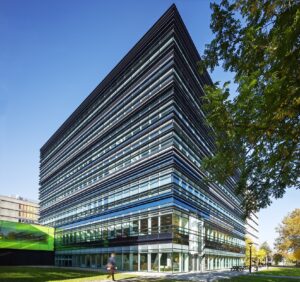VENUE
Utrecht
Utrecht is the fourth largest city of the Netherlands with a renowned medieval city center and a well preserved set of canals. Construction of its central canal (‘de Oudegracht’) started just after Utrecht was awarded ‘city rights’ in 1122 AD, some buildings that still line this canal date back to the 13th century, including city castle Oudaen. During the conference, we will have a look at the city from the canals. The Dom tower in the middle of the historical inner city is the tallest church tower in The Netherlands and became separated from the adjacent Dom church during a tornado in 1674. See https://www.discover-utrecht.com/ for more information.
Utrecht University
Utrecht University is a large (40.000+ students) and diverse institute that houses many leading research groups. The main campus, the Utrecht Science Park at De Uithof, is directly east of the city. The conference will be hosted in the Victor J. Koningsberger building, a new educational building with well-equipped lecture halls. It is located directly across Paleomagnetic Laboratory ‘Fort Hoofddijk’, which is in the middle of the Botanic Gardens.
Fort Hoofddijk and the Dutch Water Defense Lines
The paleomagnetic laboratory is housed in Fort Hoofddijk (1879 AD), a fort of the Dutch Water Defense Lines (Nieuwe Hollandse Waterlinie), a 19th century defense system based on inundating low-lying parts of the Netherlands, hence creating a barrier to protect the Western part of the Netherlands against threats from the East and South. The main purpose of Fort Hoofddijk was gun-powder storage, the builders therefore avoided using any iron to eliminate the risks of sparks. This is what makes the building so excellently suited to house a paleomagnetic lab as the magnetic background variation is very low compared to other, modern, buildings at the campus.
The entire Dutch Water Defense Lines, including Fort Hoofddijk, is a national monument since 2019, and included on the UNESCO World Heritage list since 2021. During the conference we will visit the Water Defense Lines Museum in a neighboring fort to learn more about its history.

The Koningsberger building was opened in 2015 as the new education center for the faculties of Sciences and Geosciences. It has excellent facilities to host the 18th Castle Meeting.

